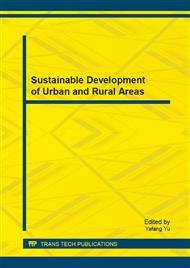[1]
H. Motz, J. Geiseler, Products of steel slags an opportunity to save natural resources, Waste Manage. 21 (2001) 285-293.
DOI: 10.1016/s0956-053x(00)00102-1
Google Scholar
[2]
Q. Wang, J.W. Yang, P.Y. Yan, Cementitious properties of super-fine steel slag, Powder Technol. 245 (2013) 35-39.
DOI: 10.1016/j.powtec.2013.04.016
Google Scholar
[3]
C.J. Shi, High performance cementing materials from in- dustrial slags-a review, J. Mater. Civil Eng. 16 (2004) 230-236.
Google Scholar
[4]
Q. Wang, P.Y. Yan, J.W. Yang, B. Zhang, Influence of steel slag on mechanical properties and durability of concrete, Constr. Build. Mater. 47 (2013) 1414-1420.
DOI: 10.1016/j.conbuildmat.2013.06.044
Google Scholar
[5]
S.G. Hu, H.X. Wang, G.Z. Zhang, Q.J. Ding, Bonding and abrasion resistance of geopolymeric repair material made with steel slag, Cem. Concr. Comp. 30 (2008) 239-244.
DOI: 10.1016/j.cemconcomp.2007.04.004
Google Scholar
[6]
Q. Wang, P.Y. Yan, J.W. Feng, A discussion on improving hydration activity of steel slag by altering its mineral compositions, J. Hazard. Mater. 2-3 (2011) 1070-1075.
DOI: 10.1016/j.jhazmat.2010.11.109
Google Scholar
[7]
T.S. Zhang, Q.J. Yu, J.X. Wei, J.X. Li, Effectiveness of novel and traditional methods to incorporate industrial wastes in cementitious materials—An overview, Resour. Conserv. Recy. 56 (2011) 134-143.
DOI: 10.1016/j.resconrec.2013.03.003
Google Scholar
[8]
T.S. Zhang, Q.J. Yu, J.X. Wei, J.X. Li, Investigation on mechanical properties, durability and micro-structural development of steel slag blended cements, J. Therm. Anal. Calorim. 110 (2012) 633-637.
DOI: 10.1007/s10973-011-1853-6
Google Scholar
[9]
Q. Wang, P.Y. Yan, J.J. Feng, Design of high-volume fly ash concrete for a massive foundation slab, Mag. Concr. Res. 65 (2013), pp.71-81.
Google Scholar
[10]
S. Swaddiwudhipong, H. Wu, M.H. Zhang, Numerical simulation of temperature rise of high-strength concrete incorporating silica fume and superplasticiser, Adv. Cem. Res. 15 (2003) 161-169.
DOI: 10.1680/adcr.15.4.161.36710
Google Scholar


